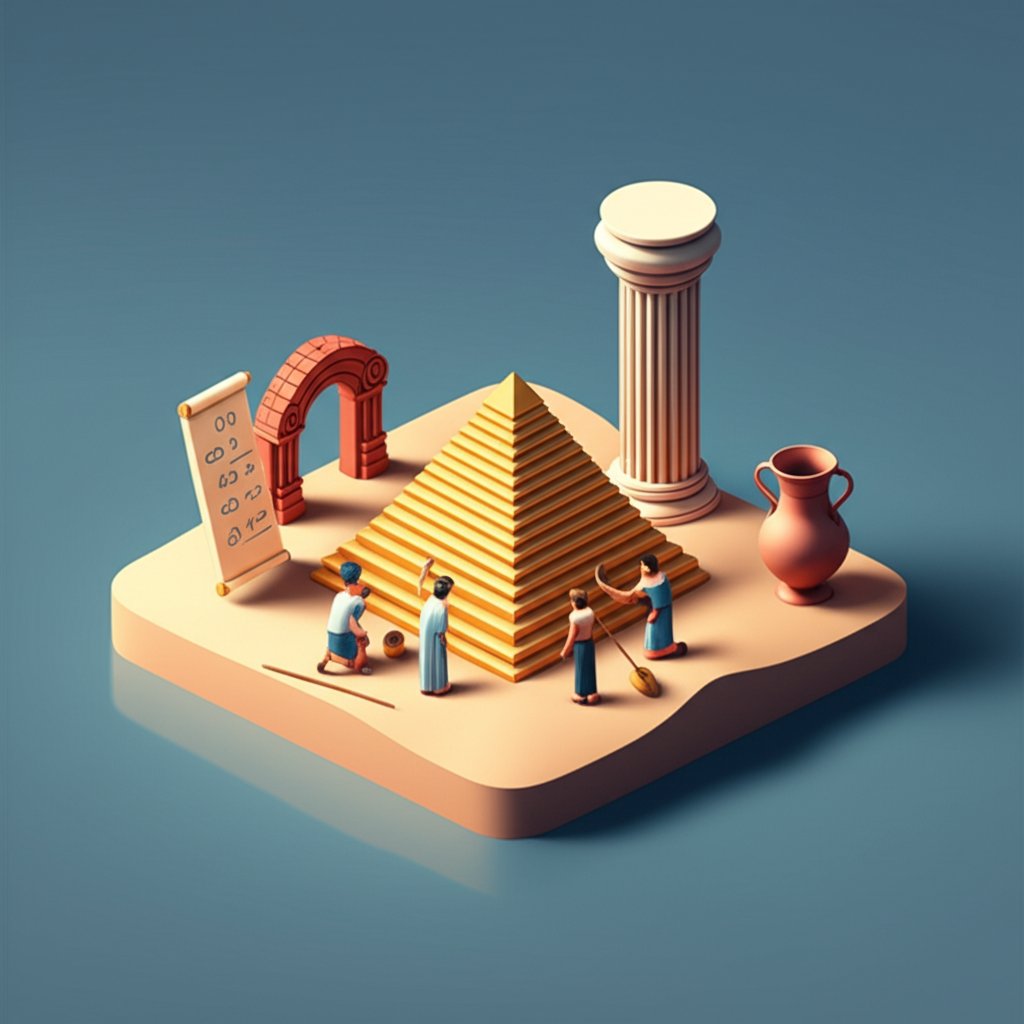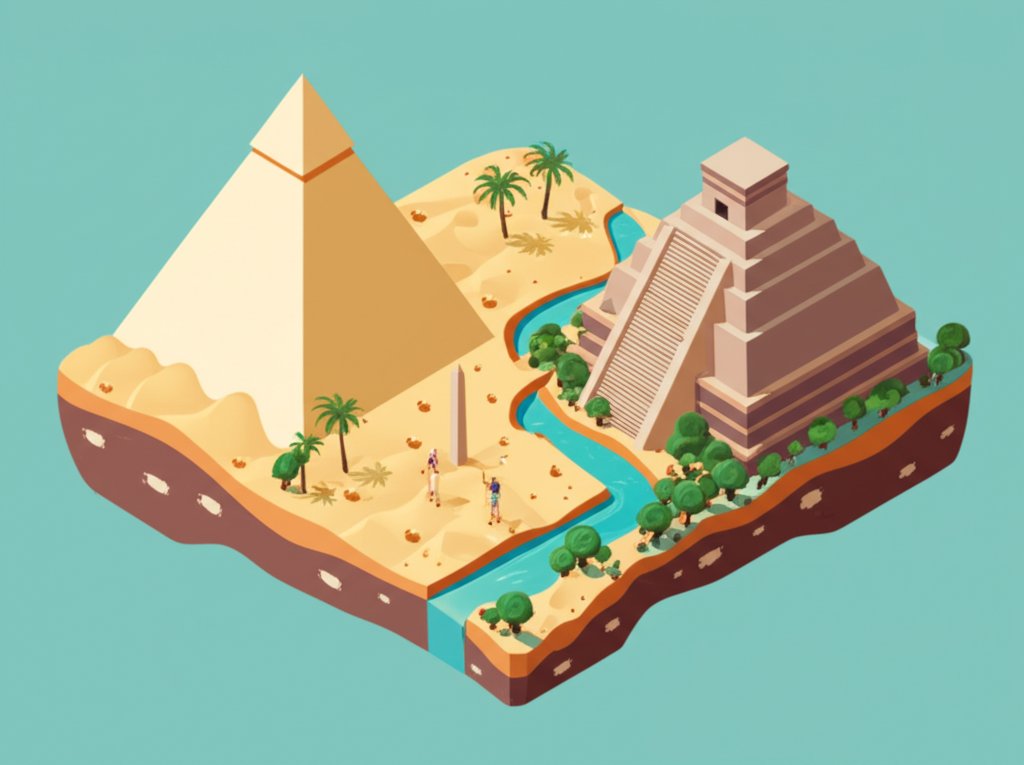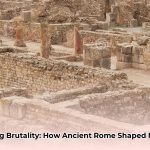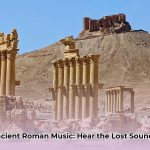Step back in time and let the dust of millennia settle, revealing the grandeur of humanity’s earliest triumphs. The ancient world beckons with tales of monumental achievements, profound wisdom, and breathtaking beauty forged by the ancient civilizations that shaped the course of ancient history. From the sun-baked plains of Africa to the fertile crescent, these societies laid the foundations for our modern existence, leaving behind a legacy of innovation, art, and philosophical thought that continues to awe and inspire.
This article invites you on an enthralling expedition, traversing the landscapes of the past to uncover ten truly epic wonders – the crowning achievements of some of the most influential ancient civilizations. We’ll delve deep into the marvels of Egypt and Mesopotamia, exploring their groundbreaking contributions before venturing further to discover other iconic societies whose brilliance still shines brightly today. Prepare to witness ingenuity, resilience, and the sheer power of human creation as we unearth the secrets of these long-lost worlds.
Unearthing the Giants: What Defines an Ancient Civilization?
Before we launch our journey across the ancient world, it’s crucial to understand what truly constitutes an “ancient civilization.” It’s more than just a group of people living together; it’s a complex tapestry woven from shared culture, sophisticated societal structures, and often, monumental achievements that stand the test of time.
From Hunter-Gatherers to City-States: The Dawn of the Ancient World
The transition from nomadic hunter-gatherer lifestyles to settled agricultural communities marked the true beginning of ancient civilizations. This pivotal shift, often termed the Neolithic Revolution, allowed for surplus food production, leading to population growth, specialization of labor, and the emergence of permanent settlements. From these early villages, larger towns and eventually sprawling city-states, and even empires, arose, each leaving its indelible mark on ancient history. The development of irrigation systems, domestication of animals, and advancements in tool-making were critical steps in this evolution, enabling societies to flourish in diverse geographical settings.
Pillars of Progress: Common Traits of Ancient Civilizations
While each ancient civilization possessed its unique identity, several defining characteristics united them as beacons of human progress in the ancient world:
- Organized Government & Social Hierarchy: From pharaohs and kings to complex bureaucratic systems, order was maintained, and resources were managed. Society was typically stratified, with distinct classes.
- Specialized Labor: Beyond farming, roles like artisans, soldiers, priests, and scribes emerged, fostering economic complexity and cultural richness.
- Public Works & Monumental Architecture: Grand temples, towering pyramids, intricate irrigation systems, and fortified cities not only demonstrated engineering prowess but also served communal, religious, or defensive purposes.
- Writing Systems: The invention of writing (e.g., cuneiform, hieroglyphs) was revolutionary, enabling record-keeping, literature, laws, and the transmission of knowledge across generations—a cornerstone of ancient history.
- Art & Intellectual Development: Sophisticated art forms, advancements in mathematics, astronomy, and early forms of philosophy and literature blossomed, reflecting the intellectual curiosity and spiritual depth of these societies.
- Complex Religious Beliefs: Polytheistic religions, often with elaborate rituals and powerful priestly classes, provided a framework for understanding the universe and guiding moral conduct.
The Sands of Time: Majestic Egypt and Its Enduring Legacy
No discussion of ancient civilizations is complete without revering the land of the pharaohs. Egypt, a civilization that endured for over three millennia, stands as a testament to human ingenuity, artistic brilliance, and an unwavering belief in the afterlife. Its influence permeated much of the ancient world and continues to captivate archaeologists and historians alike.
The Pyramids of Giza: Engineering Marvels of the Ancient World
Among the most iconic epic wonders of ancient history are the Pyramids of Giza, particularly the Great Pyramid of Khufu. Constructed over 4,500 years ago, these immense stone structures are not merely tombs; they are monumental feats of engineering, precision, and organization. Imagine millions of colossal limestone blocks, some weighing many tons, quarried, transported, and meticulously placed with astonishing accuracy, all without modern machinery. Their enduring presence symbolizes the power of the pharaohs and the deep religious conviction of ancient Egypt that death was merely a gateway to eternal life. The pyramids stand as silent sentinels, whispering tales of a civilization obsessed with permanence and the divine.
Pharaohs, Gods, and Hieroglyphs: Unlocking Egyptian Culture
The heart of ancient Egypt pulsed with a vibrant culture profoundly intertwined with its polytheistic religion. Pharaohs were seen as divine rulers, mediating between gods and mortals. The pantheon of gods and goddesses, from Ra, the sun god, to Osiris, god of the afterlife, governed every aspect of life. This spiritual worldview permeated Egyptian art, architecture, and daily life.
Another epic wonder is the hieroglyphic writing system. Far more than just symbols, these intricate pictorial characters adorned temple walls, papyrus scrolls, and sarcophagi, recording historical events, religious texts, and administrative documents. The decipherment of hieroglyphs through the Rosetta Stone unlocked untold secrets, offering unparalleled insights into Egypt’s rich ancient history, beliefs, and societal structure. The meticulous mummification process, designed to preserve the body for the afterlife, further highlights their unique understanding of existence and eternity.
Beyond the Nile: Egypt’s Influence on Ancient History
The reach of ancient Egypt extended far beyond the fertile banks of the Nile. Its distinct artistic styles, architectural innovations (like the use of monumental columns), and sophisticated religious practices influenced neighboring regions and later empires. Trade routes connected Egypt to the Near East, Africa, and the Mediterranean, exchanging goods, ideas, and technologies. Concepts of sacred kingship, administrative efficiency, and monumental art found echoes in subsequent ancient civilizations, solidifying Egypt’s position as a foundational power in the ancient world.
The Cradle of Civilization: Mesopotamia and Its Revolutionary Innovations
East of Egypt, nestled between the Tigris and Euphrates rivers, lies Mesopotamia – often heralded as the “Cradle of Civilization.” This fertile crescent was a hotbed of innovation, giving birth to concepts and technologies that profoundly reshaped the ancient world and continue to influence us today. From the first cities to comprehensive legal codes, Mesopotamia truly revolutionized ancient history.
Between Two Rivers: Sumer, Akkad, Babylon, and Assyria
Mesopotamia was not a single, unified empire for most of its ancient history but a dynamic region where various powerful city-states and empires rose and fell. The Sumerians, around 4500 BCE, were pioneers, establishing the world’s first true cities like Uruk and Ur. They developed intricate irrigation systems, stunning ziggurats (temple towers), and advanced administrative systems. Following them, the Akkadians under Sargon the Great formed one of the first multi-ethnic empires. Later, the Babylonians, famous for King Hammurabi and the legendary city of Babylon with its Hanging Gardens, and the formidable Assyrians, known for their powerful military and vast empire, each contributed significantly to Mesopotamia’s vibrant tapestry.
Cuneiform and City Planning: Mesopotamia’s Enduring Gifts
Among the most significant epic wonders from Mesopotamia is cuneiform, the world’s first known writing system. Developed by the Sumerians around 3400 BCE, cuneiform began as pictograms and evolved into wedge-shaped marks pressed into clay tablets. This revolutionary invention allowed for detailed record-keeping, the administration of complex economies, the codification of laws, and the creation of epic literature, like the Epic of Gilgamesh. Cuneiform was adopted by various cultures throughout the Near East and is a cornerstone of our understanding of ancient history.
Beyond writing, Mesopotamia gifted the ancient world with advanced city planning, including organized streets, drainage systems, and monumental public buildings. They invented the wheel, revolutionized agriculture with the plow, and developed sophisticated understanding of mathematics (including a sexagesimal, or base-60, number system still seen in our timekeeping and circles) and astronomy, influencing later Greek and Roman thinkers.
Hammurabi’s Code: Justice in the Ancient World
Another profound contribution from Mesopotamia was the Code of Hammurabi, enacted by the Babylonian king Hammurabi around 1754 BCE. This collection of 282 laws, inscribed on a massive basalt stele, is one of the earliest and most complete written legal codes from the ancient world. It covered a wide range of issues, from property rights and commerce to marriage and criminal justice, famously including the principle of “an eye for an eye.” Hammurabi’s Code established a precedent for written laws and the concept of justice, forming a critical part of ancient history’s legal development and influencing future legal systems for millennia.
Beyond the Big Two: 8 More Epic Wonders of Ancient Civilizations

While Egypt and Mesopotamia cast long shadows, numerous other ancient civilizations cultivated their own extraordinary legacies, leaving behind a wealth of epic wonders that continue to reveal the diversity and ingenuity of the ancient world. Here are eight more monumental contributions:
The Indus Valley Civilization (Harappa & Mohenjo-Daro): Urban Planning Genius
Flourishing around 2500-1900 BCE in what is now Pakistan and northwest India, the Indus Valley Civilization (also known as the Harappan Civilization) developed highly sophisticated urban centers like Harappa and Mohenjo-Daro. Their epic wonders include remarkably advanced city planning, featuring grid-like street patterns, impressive drainage and sewage systems (predating many later civilizations), and multi-story brick houses. This meticulous attention to civic infrastructure suggests a highly organized society with a strong central authority, though their undeciphered script still holds many secrets of their ancient history.
Ancient Greece: Birthplace of Democracy and Philosophy
Emerging around 800 BCE, Ancient Greece gifted the ancient world with concepts that are pillars of modern society. From the democratic ideals of Athens to the philosophical inquiries of Socrates, Plato, and Aristotle, Greek thinkers revolutionized human thought. The majestic Parthenon, a temple dedicated to the goddess Athena, stands as an epic wonder of architectural harmony and proportion, influencing Western architecture for centuries. Greek contributions to mathematics, science, drama, and the Olympic Games are enduring testaments to the brilliance of this ancient civilization.
The Roman Empire: Engineering, Law, and Military Might
From a small city-state, Rome grew into a vast empire dominating much of Europe, North Africa, and the Middle East for over a thousand years. Its epic wonders include an unparalleled network of roads, impressive aqueducts that supplied cities with fresh water, and architectural masterpieces like the Colosseum and the Pantheon. Roman law, with its principles of justice, property, and governance, formed the bedrock of many modern legal systems. Their formidable military organization and administrative prowess allowed them to sustain an empire that profoundly shaped the course of ancient history and beyond.
Ancient China: Dynasties, Inventions, and the Great Wall
China’s ancient history is a rich tapestry of dynasties, philosophical schools (Confucianism, Taoism), and groundbreaking inventions. The Great Wall of China, an epic wonder stretching thousands of miles, showcases the immense scale of ancient Chinese engineering and defensive capabilities. Chinese ancient civilizations also invented papermaking, gunpowder, the compass, and printing, innovations that fundamentally altered the trajectory of human development globally. The Terracotta Army, guarding the tomb of Emperor Qin Shi Huang, is another spectacular testament to their artistry and power.
The Maya Civilization (Mesoamerica): Astronomical Prowess and Calendar Systems
Flourishing in Mesoamerica from around 2000 BCE to 900 CE, the Maya developed one of the most sophisticated ancient civilizations of the Americas. Their epic wonders include awe-inspiring pyramid-temples, intricate hieroglyphic writing, and an advanced understanding of mathematics (including the concept of zero) and astronomy. The Maya created remarkably accurate calendar systems, such as the Long Count Calendar, demonstrating their profound observation of celestial movements. Cities like Tikal and Chichen Itza stand as monumental testaments to their architectural and intellectual achievements.
The Inca Empire (Andes): Master Builders of the Andes (Machu Picchu)
High in the Andes Mountains of South America, the Inca Empire (1400s-1532 CE) created an immense and highly organized ancient civilization without a written language. Their most famous epic wonder, Machu Picchu, is a breathtaking lost city, demonstrating incredible dry-stone masonry where massive stones are fitted together so precisely that no mortar is needed. The Incas also developed an extensive road system, sophisticated agricultural terraces, and a unique knot-based record-keeping system called quipu, showcasing their remarkable adaptability and engineering skills in challenging terrain.
The Persian Empire: Vastness and Cultural Exchange
Spanning three continents in its prime (around 550-330 BCE), the Achaemenid Persian Empire was one of the largest and most influential ancient civilizations. Their epic wonders include grand imperial cities like Persepolis, with its magnificent palaces and reliefs. The Persians were renowned for their efficient administration, tolerance of diverse cultures, and an advanced road network, notably the Royal Road, which facilitated trade and communication across their vast domain. This empire fostered significant cultural exchange, leaving a lasting mark on the Near East and beyond in ancient history.
Minoan Civilization (Crete): Palaces and Maritime Power
Located on the island of Crete, the Minoan Civilization (c. 2700–1450 BCE) was a significant maritime power in the Bronze Age Aegean. Their epic wonders are characterized by elaborate palace complexes, most notably Knossos, featuring vibrant frescoes, advanced plumbing, and multi-story architecture. These palaces served as administrative, economic, and religious centers. The Minoans’ thalassocracy (sea power) allowed them to establish extensive trade networks throughout the Mediterranean, influencing later Greek cultures and playing a crucial, though sometimes mysterious, role in early ancient history.
Echoes Through Time: The Enduring Impact of Ancient History Today

The study of ancient civilizations is far from a mere academic exercise; it is an exploration of our collective human story. The epic wonders we’ve journeyed through are not just relics; they are blueprints and lessons, echoing through the corridors of time to shape our present and inform our future.
Lessons from the Past: Resilience and Innovation
From adapting to arid deserts in Egypt and Mesopotamia to forging empires across vast continents, ancient civilizations demonstrated incredible resilience in the face of environmental challenges, political turmoil, and social change. Their innovative solutions to complex problems – whether in agriculture, engineering, governance, or communication – provide valuable insights into human adaptability and the power of creative thinking. They teach us that monumental achievements often spring from collective effort, organized thought, and sheer determination. Understanding their rise and fall can illuminate patterns in human society, offering cautionary tales and inspiring blueprints for sustainable development and societal cohesion.
Preserving Our Heritage: Why Ancient Civilizations Still Matter
The legacies of these ancient civilizations are woven into the fabric of our modern world. Our legal systems owe a debt to Hammurabi, our mathematics to Sumer, our architecture to Greece and Rome, and our understanding of time to the Maya. The art, literature, and philosophical inquiries of these cultures continue to enrich our lives and challenge our perspectives. Preserving the archaeological sites, artifacts, and written records from the ancient world is not just about holding onto the past; it’s about understanding where we come from, appreciating the continuity of human endeavor, and safeguarding the knowledge that can guide us forward. Each discovery, each deciphered text, adds another layer to our understanding of the human experience and the boundless potential of ancient history.
Conclusion
Our journey through the ancient civilizations and their 10 epic wonders has revealed a tapestry of human achievement stretching across millennia. From the majestic pyramids of Egypt and the revolutionary innovations of Mesopotamia to the urban brilliance of the Indus Valley, the philosophical depth of Greece, the engineering might of Rome, the inventive spirit of China, the astronomical prowess of the Maya, the mountain mastery of the Inca, the vastness of Persia, and the maritime elegance of Minoan Crete, these societies laid the groundwork for the world we inhabit.
The lessons gleaned from their ancient history – of resilience, innovation, governance, and the pursuit of knowledge – remain profoundly relevant. By exploring these bygone eras, we gain not only a deeper appreciation for the ingenuity of our ancestors but also a clearer perspective on the enduring challenges and limitless possibilities that define the human spirit. The ancient world may be past, but its legacy is undeniably present, urging us to continue exploring, learning, and building our own epic wonders for future generations.
FAQ
Q1: What are the oldest ancient civilizations?
A1: The oldest known ancient civilizations primarily emerged in Mesopotamia (Sumerians, Akkaids, Babylonians), dating back to around 4500-4000 BCE. Soon after, ancient Egypt and the Indus Valley Civilization also developed as major early centers of complex society, all around the 4th to 3rd millennia BCE.
Q2: What are some major contributions of ancient civilizations?
A2: Ancient civilizations made countless major contributions, including the invention of writing (cuneiform, hieroglyphs, alphabets), organized legal systems (Hammurabi’s Code), advanced mathematics (geometry, algebra, concept of zero), monumental architecture (pyramids, ziggurats, temples), sophisticated irrigation systems, democratic principles, philosophical thought, medicine, and foundational scientific observations in astronomy.
Q3: Why is it important to study ancient history?
A3: Studying ancient history is crucial because it provides context for understanding our present world. It reveals the origins of many of our political systems, legal codes, scientific principles, artistic traditions, and social structures. It offers lessons on human resilience, innovation, societal collapse, and the enduring nature of human challenges, helping us to inform our future decisions.
Q4: What is Mesopotamia most known for?
A4: Mesopotamia is most known as the “Cradle of Civilization” for its groundbreaking innovations. These include developing the world’s first cities, the invention of cuneiform writing, the wheel, the plow, advanced irrigation, and the first comprehensive legal code (Hammurabi’s Code). It also saw significant advancements in astronomy and mathematics.
Q5: What are Egypt’s most famous epic wonders?
A5: Egypt’s most famous epic wonders are undoubtedly the Pyramids of Giza, particularly the Great Pyramid of Khufu, which remains the only surviving ancient wonder of the world. Other significant wonders include the Great Sphinx, the temples of Karnak and Luxor, the Valley of the Kings, and the meticulously preserved mummies and intricate hieroglyphs that adorn their tombs and monuments.










